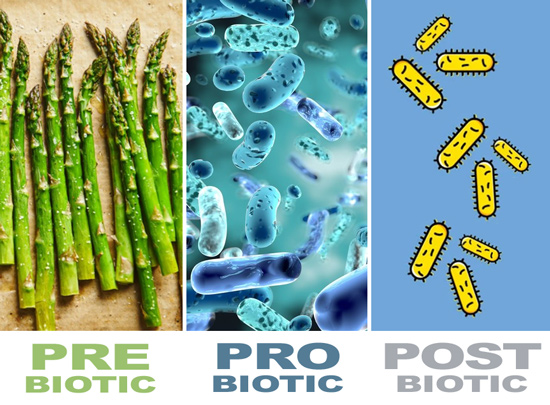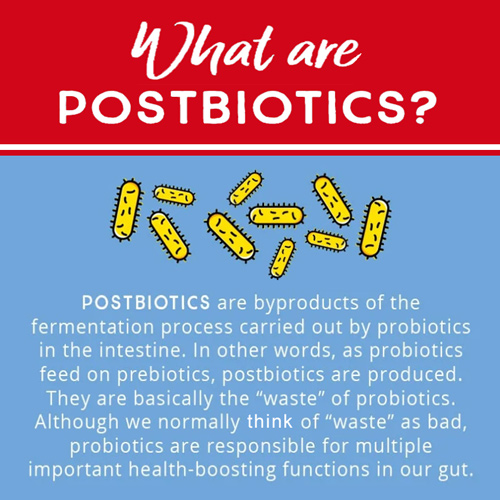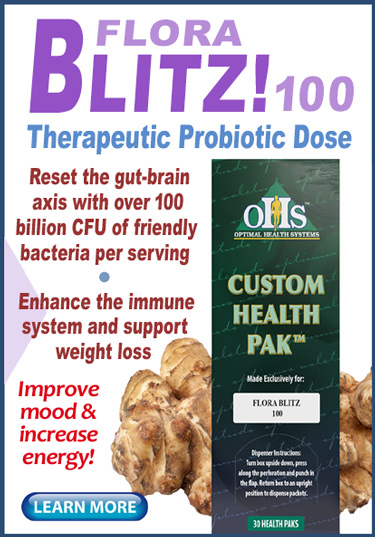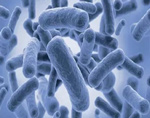Just when you thought you had a good understanding of probiotics, along comes something called pre-biotics. Then soon after, something called post-biotics.
Just what are they, and how do they promote optimal health?
The good news is they’re all related, and part of the same process.
The word biotics means “of or having to do with life or living organisms.” And, as the definition implies, the benefits of biotics are life-giving.
A century of research into the characteristics of biotics has demonstrated their health-enhancing roles in the immune system, in metabolic diseases, in mental health issues, and in many other conditions.
Individuals can improve the composition of their gut microbiomes with supplements and fermented foods—and finally the medical establishment is finally recognizing the use of biotics for disease management.
So, let’s take a look at the relationship these three different “biotics” have with each other.
Probiotics
Probiotics are living microorganisms that, once they enter the digestive tract, increase the population of the friendly bacteria (probiotics) in the gut.
Many traditional foods and drinks are sources of different strains of probiotics, but most Americans obtain probiotics from supplements. That’s because the Western diet is high in processed foods, while most “probiotic foods” are found in fermented foods like kimchi, sauerkraut, miso, natto and real yogurt.
The live organisms in these fermented foods (or supplements) confer many health benefits to the host: better digestion, lower rates of respiratory illness, fewer allergies, protection against heart disease, and easier weight management.
Recent studies even show that a healthy gut provides protection for the brain through the gut-brain axis.
“Seventy percent of the immune system is located in the gut,” says David Heber, MD, PhD, professor emeritus of medicine at UCLA Health. “So, it’s easy to see how probiotics are so important to optimal health.”
Prebiotics
Prebiotics differ from probiotics in that they are not alive nor digestible by humans. They are, however, compounds in food that supply fuel for the beneficial microbes that are already in the gut and need to be maintained. As these pre-biotic foods enter the gut the existing microbes can feed on them and multiply.
These prebiotic compounds are primarily found in dietary fiber or “roughage”—which is acquired by eating fiberous foods or supplements.
The prebiotics in the fiber foods need to bypass digestion and make it all the way to the colon. There, the microorganisms metabolize and ferment the prebiotics to survive.
This metabolism and fermentation process is beneficial to gut health because it creates a variety of other byproducts that help the body in a number of ways.
Fiber foods feed friendly flora!
Prebiotic foods are usually high in certain types of fiber known as soluble fiber. Two of these soluable fibers include inulin and pectin. Inulin is found in foods like asparagus, onions, garlic and yams. Pectin is found in potatoes, apples, carrots, green beans and tomatoes.
In addition to soluable fibers, resistant starches are also an important source of prebiotic foods. Resistant starches have characteristics of both soluable and insoluable fibers, and are found in foods like bananas, legumes, rice and oats.
Research has established that as the prebiotics support the growth of healthy microbes many aspects of health improve. Mineral absorption is enhanced, immune function is stronger, and blood sugar is regulated more efficiently.
Some consumers choose to take prebiotic supplements to help their body “make” its own probiotics; other consumers choose to take probiotic supplements because they feel probiotics are more proven and have been on the market for many years.
According to market tracking organizations, taking probiotics directly is the choice for most people.
When prebiotics are sold as supplements, they are regulated just like probiotics, vitamins, minerals, herbs and other products under the U.S. Food & Drug Administration’s dietary supplement regulations.
Postbiotics
Postbiotics are the end result of ingesting prebiotic and probiotic foods. Postbiotics are metabolites, or “small molecules” that carry out additional functions in the body.
In other words, postbiotics are byproducts of the fermentation process carried out by probiotics in the intestine. As probiotics feed on prebiotics, postbiotics are produced. They are basically the “waste” of probiotics.
Some examples of postbiotics include organic acids, bacteriocins, carbonic substances and enzymes.
Postbiotics also have their own specific physiological benefits, including anti-inflammatory, antioxidant, and anticarcinogenic properties. They help with water and electrolyte absorption, as well as enhance immune function.
These are just some of the known effects, but with research expanding greatly in this relatively-new area of nutrition, additional benefits are sure to be discovered.
Postbiotic science still emerging
As far as supplementing, postbiotics are relatively new and are not yet as widely available as probiotic products.
In 2021 a panel of experts convened by the International Scientific Association for Probiotics and Prebiotics noted, “The term ‘postbiotics’ is increasingly found in the scientific literature and on commercial products, yet is inconsistently used and lacks a clear definition.”
The panel then voted to establish the international definition of postbiotics as, “A preparation of inanimate microorganisms and/or their components that confers a health benefit on the host.”
By this definition examples of a postbiotic can therefore be whole microbial cells or components of the cells, that have been deliberately inactivated.
For now, most nutritional experts feel the best way to benefit from postbiotics is to keep your gut healthy by consuming prebiotic and probiotic foods and supplements. Since probiotics work by producing chemicals that are technically postbiotic, the “postbiotic affect” is already accomplished by consuming probiotics.
Concluding thoughts
Prebiotics, probiotics and postbiotics are all essential for supporting the gut microbiome. Both beneficial and harmful bacteria live in the human body, and each of the three biotics has a distinct purpose in the process of increasing the beneficial microorganisms.
Ensuring a regular intake of prebiotic foods (fiber foods) and probiotic foods (fermented foods) is critical. It will help reduce the quantity and effects of the harmful bacteria, and will ensure the body reaps a postbiotic benefit.
Many probiotic blends are included in the Optimal Health Systems product line. Click links below to learn more.
• Flora Blitz 100
• Optimal Flora Plus
• 21-Day Blitz Challenge Package
• Exposure Protection Pak
• Natural Z Pak
• Optimal Defense
OHS Gut Health Solutions
At Optimal Health Systems, we understand the importance of a balanced gut microbiome. Our whole-food-based supplements are designed to support every stage of your gut health journey—whether you’re looking to boost your prebiotics, strengthen your probiotics, or harness the power of postbiotics.
Explore our complete line of digestive health supplements to discover the best options for your health needs.
– – –
Sources: JAMA Psychiatry, FDA.gov (supplement regulations), Scientific Association for Probiotics and Prebiotics (review published on Nature.com), Wikipedia (metabolites).




